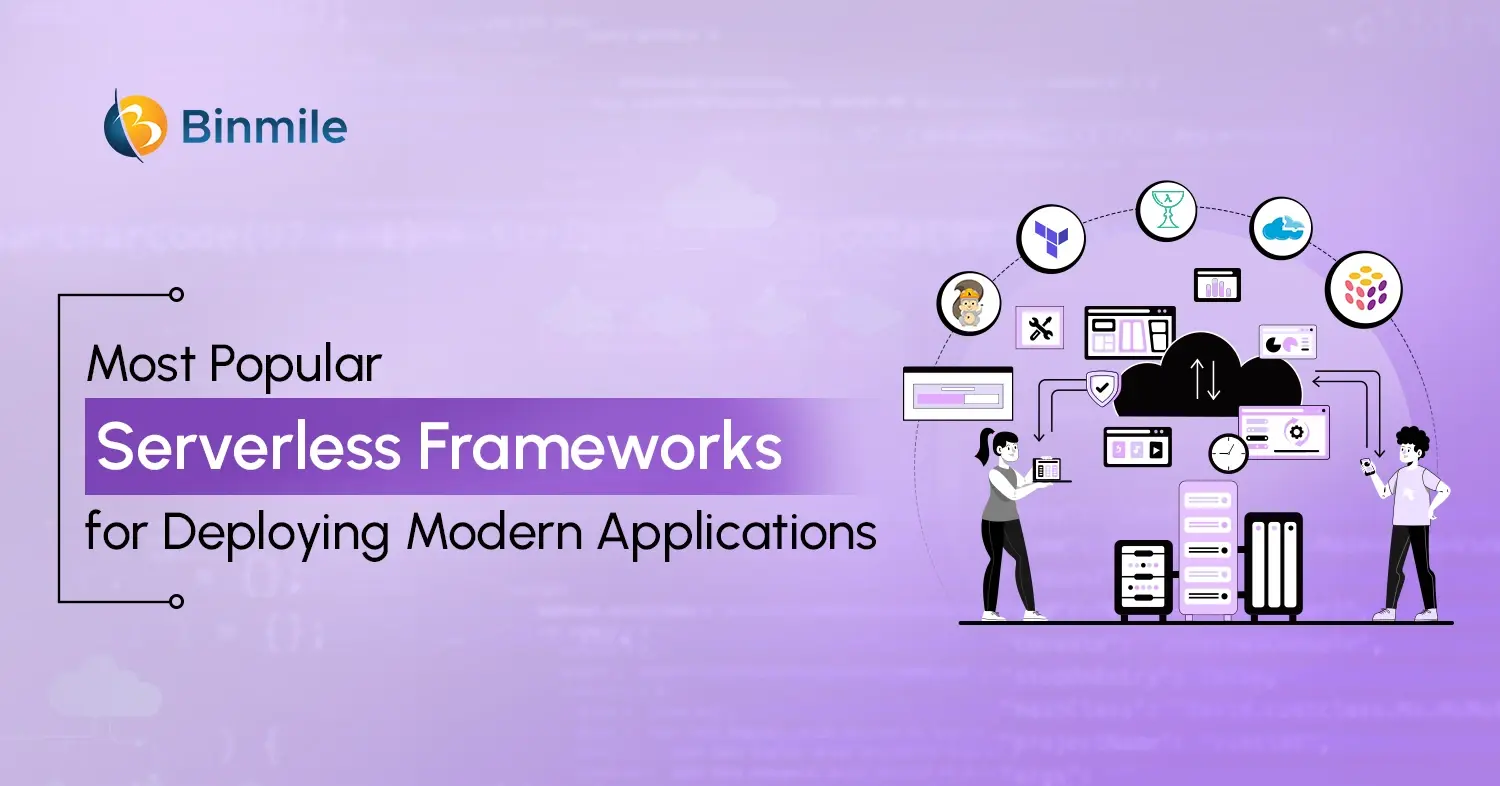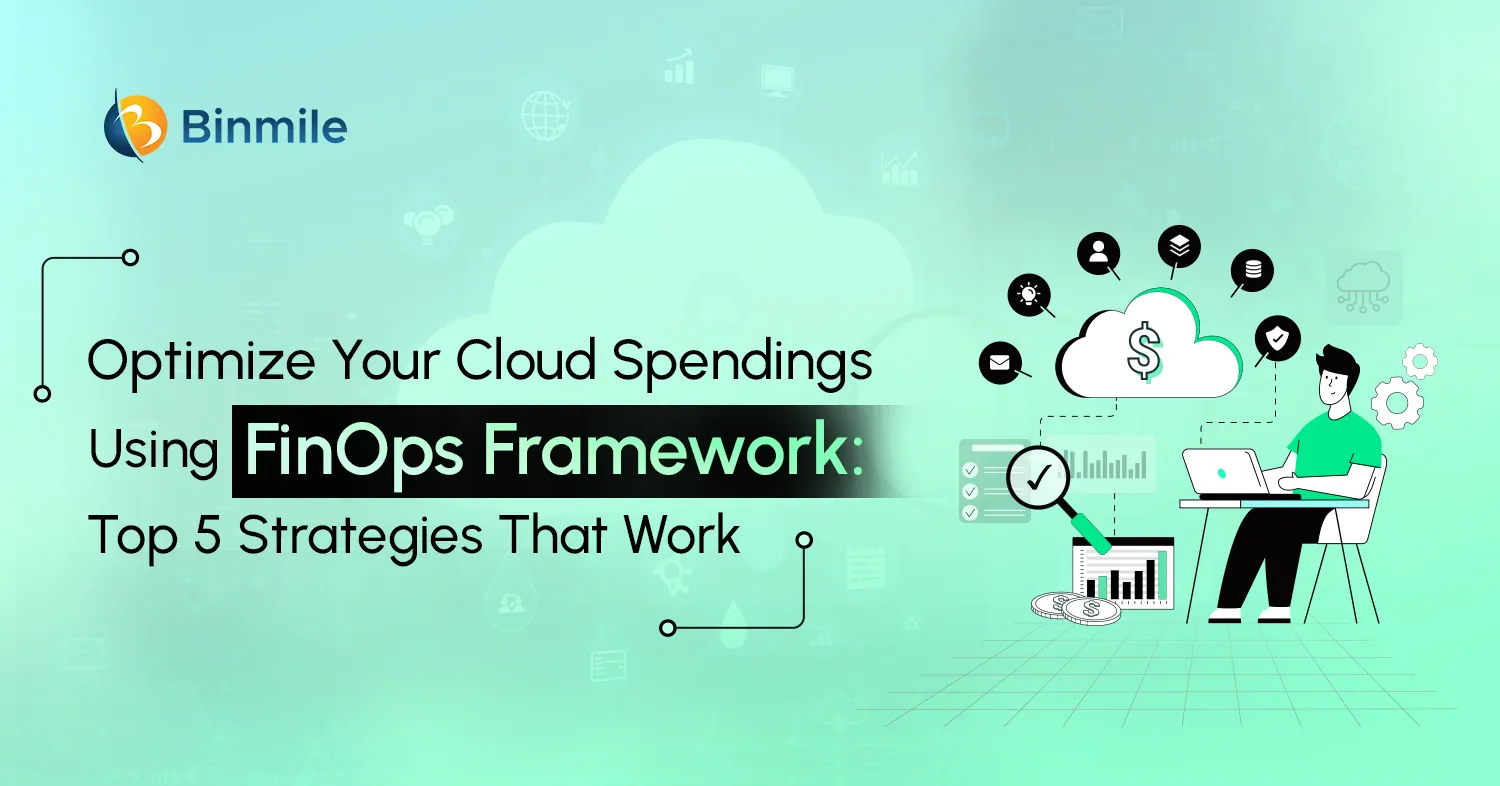It’s an understatement to say that cloud computing has transformed the way businesses operate. With SaaS, PaaS, or IaaS, these cloud computing models are constantly evolving to empower several businesses to enhance their productivity. Therefore, a relatively new model has emerged that can simplify the integration of cloud services into your IT architecture. It’s called XaaS, “Everything as a Service,” or “Anything as a Service.” The model is bringing a huge change in the way businesses and individuals access and utilize technology, enabling them to harness a wide range of tools without the burden of ownership or complex infrastructure.
It sounds like a lot to take in, but don’t worry—we’ll break it down for you. This post will cover what XaaS is, and review the different types of XaaS companies. In this blog, we’ll discuss “XaaS,” in detail, about how businesses can leverage the products, tools, and technologies to streamline their operations offered by the model. In addition, we’ll also talk about the various advantages it offers to your organization.
What is XaaS: Introduction, Key Features and Benefits
XaaS, or “Anything as a Service,” is a cloud computing model that delivers various IT resources and applications over the internet as on-demand services. Essentially, any IT function can be transformed into a service for enterprise consumption. The service is paid for in a flexible consumption model rather than as an upfront purchase or license.
It encompasses a wide range of offerings, including Infrastructure as a Service (IaaS), Platform as a Service (PaaS), Software as a Service (SaaS), and other specialized services tailored to specific business needs.

Let’s understand them:
- Software-as-a-Service (SaaS): It offers software applications over the internet. For instance, Zoho and Adobe.
- Platform-as-a-Service (PaaS): It provides a platform to empower developers to build, deploy, and manage apps without worrying about the underlying infrastructure. For example, Quickbase and AWS Elastic Beanstalk.
- Infrastructure-as-a-Service (IaaS): It focuses on providing virtualized computing resources over the internet. AWS or Google Cloud are prime examples.
- Function-as-a-Service (FaaS): Also known as serverless computing it enables developers to run code in response to events without managing servers. For example, AWS Lambda and Google Cloud Functions.
- Backup-as-a-Service (BaaS): BaaS offers cloud-based backup and recovery solutions. For instance, CloudAlly for Microsoft 365 and AWS Backup.
Here are Some Key Features and Benefits of XaaS to Businesses:
- On-Demand Access: XaaS provides instant access to IT resources and applications, allowing businesses to scale up or down based on demand without the need for large upfront investments.
- Pay-Per-Use Billing: It typically follows a pay-as-you-go or subscription-based pricing model, where businesses only pay for the services they consume, leading to cost optimization and improved budget management.
- Scalability and Flexibility: It offers unparalleled scalability, enabling businesses to adjust resources dynamically to meet fluctuating demands. It also provides flexibility to choose from various services tailored to specific requirements.
- Managed Services: Many XaaS services come with managed software services, where the service provider handles tasks such as maintenance, updates, and security, freeing up internal resources and reducing operational overhead.
- Automation and Integration: It often incorporates automation capabilities and supports seamless integration with existing systems, allowing for streamlined workflows and enhanced productivity.
Benefits of XaaS in Cloud Computing for Businesses:

As a Service (XaaS) in cloud computing does not have cost-efficiency as the only advantage to offer to businesses, but a multitude of other features and benefits as well.
- Agility and Innovation: XaaS services assist enterprises to reinvent with innovations through the easy acquisition of modern equipment and apps instead of putting more effort into infrastructure management tasks. This trend indicates that organizations become increasingly adept and flexible in trying other products and shortening response time to changing market dynamics gaining a competitive advantage in the digital era.
- Enhanced Security and Compliance: Security is no joke, and most major XaaS operators dig into it during the creation of cybersecurity infrastructure and compliance measures to maintain the confidentiality of sensitive information and to comply with the regulations. Through this channel, businesses can be protected against security risks at the compliant level, as well as protect their reputations, which, in the end, nurtures conviction and trust from their customers and stakeholders.
- Improving the Expense Model: In traditional on-premise models, enterprises need to spend separately on software, hardware, servers, security, and infrastructure—and then install them on-site. Further, they had to link everything together to create networks. However, with XaaS, businesses simply buy what they need, and pay as they go, thus translating into cost reduction and improved ROI.
- Scalability & Accessibility: Leveraging this model, businesses can easily adjust the level of service based on their changing needs, whether they intend to expand or downsize. Additionally, it lets them utilize services or resources that are available from anywhere with an internet connection. Thus, this level of scalability and accessibility promotes collaboration, and productivity, and fosters growth and efficient resource utilization.
- Focus on Core Competencies: With the advent of XaaS, businesses can now concentrate on their core activities and strategic plans, as IT jobs such as maintenance will be taken care of by providers ex-ante. This shows that companies can utilize their internal resources in such a way that meets their other operational requirements of innovation, customer engagement, and promotion which contributes to the longer-run success of the company.
Also Read: Cloud Computing Benefits for Financial Services
Challenges of XaaS
Though XaaS offers a multitude of benefits to businesses, it also comes with certain challenges. Such as:
- Resilience and Internet Reliability: There’s a huge reliance on the XaaS provider’s infrastructure, thus users might feel disruptions or downtime in services.
- Visibility: Users have limited visibility into and control over the service provider’s environment and infrastructure.
- Security or Attack: There’s a chance if the provider faces a security or data breach, the user’s data can be put at risk.
- Hidden fees: There’s no doubt XaaS is cost-effective but there could be some hidden or unexpected costs while working with a cloud provider.
7 Steps on How to Adopt XaaS in Cloud Computing: Beginner’s Guide

Now you know everything about XaaS and how it impacts cloud computing, let’s shift our focus to how to implement Everything as a Service or XaaS into your IT ecosystem:
1. Evaluate Your Needs
Assess your existing IT infrastructure and business needs to determine the type and the amount of hardware and software for operations. Focus on questions such as what type of software, hardware, or services do you need? SaaS provides a vast range, you need to focus on what suits you most.
2. Integration and Management
Analyze your current IT infrastructure and determine which components can be used alongside the XaaS service offerings. The next step will be to compile a management plan that will enable the monitoring and optimization of your XaaS platform.
3. Explore XaaS Models
Gain insight into different XaaS models (SaaS, PaaS, IaaS, etc.) and how they can cater to your needs. SaaS delivers an on-demand software product, PaaS is a development platform, and individually, IaaS accommodates the virtualization of computing resources.
4. Research Providers
This would enable you to understand the XaaS requirements clearly and also compare cloud services providers, their portfolio, and their offerings in the cloud. Try to find a vendor that offers scalability, is safe, has enough capacity for customers, and has good customer support.
5. Cost Optimization
XaaS is quite cost-effective but be mindful of hidden charges in your plan. Carefully study the pricing models and choose the one that fits your budget most effectively, without compromising the quality.
6. User Adoption and Training
Develop a plan for your team to get used to the transition from on-premise models to XaaS. Offer comprehensive training and workshops to work around this new technology.
7. Ongoing Management and Optimization
For monitoring and management of your XaaS environment, consider areas such as ongoing security assessments, performance optimization, cost control measures, and disaster recovery plans if things go sideways to maximize your XaaS investment result.
Wrapping Up
The rise of cloud computing made XaaS possible as the cloud lets businesses access different services online, from software (SaaS) to infrastructure (IaaS). This makes things more flexible, saves money, and helps businesses run smoothly. Therefore, when organizations adopt XaaS, they aim to change the game for businesses, be more innovative and grow faster. In today’s digital world, XaaS is becoming increasingly important and the sooner you migrate it to XaaS, it’ll allow you to get the latest apps and technologies without spending a lot of money upfront.
If you need help, cloud service providers can assist you and people to move your data and applications to the cloud safely and securely. This way, your business can take full advantage of XaaS with the guidance of professionals.
Frequently Asked Questions
- SaaS Examples: Google Workspace, Salesforce, Zoom
- PaaS Examples: Microsoft Azure App Services, Heroku
- IaaS Examples: Amazon EC2, Google Cloud Compute Engine
- Other XaaS Examples: Dropbox (Storage-as-a-Service), Cloudflare (Security-as-a-Service)
XaaS in cloud computing offers flexibility, cost-efficiency, and scalability. It enables businesses to adapt quickly to changing needs, reduce capital expenditures, and access advanced technologies without large upfront investments.
XaaS, or “Anything-as-a-Service,” in cloud computing refers to the delivery of various services over the internet. It encompasses a broad category of services beyond traditional software (SaaS), platform (PaaS), and infrastructure (IaaS). XaaS provides businesses with scalable, on-demand access to advanced technologies without the need for physical infrastructure or in-house expertise.









